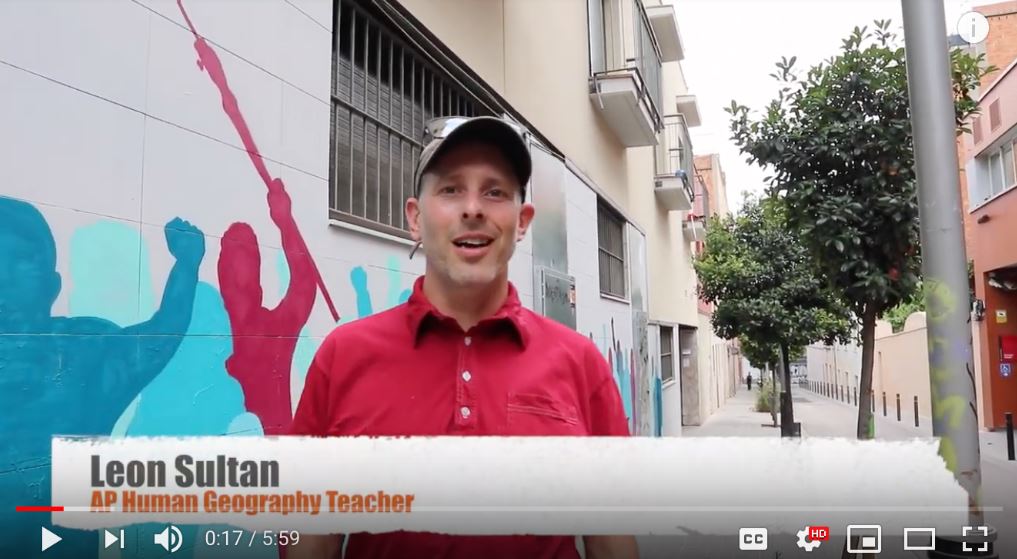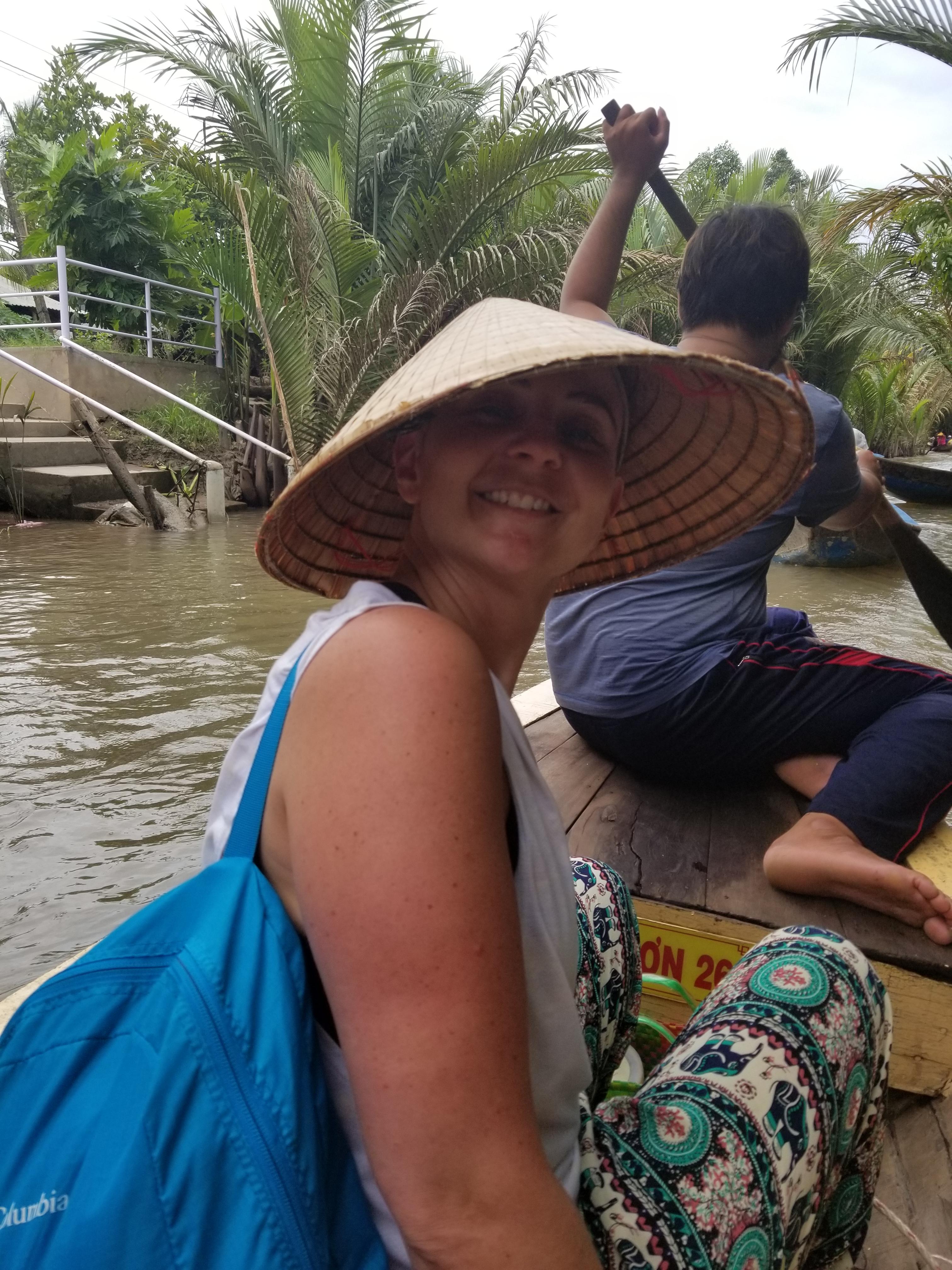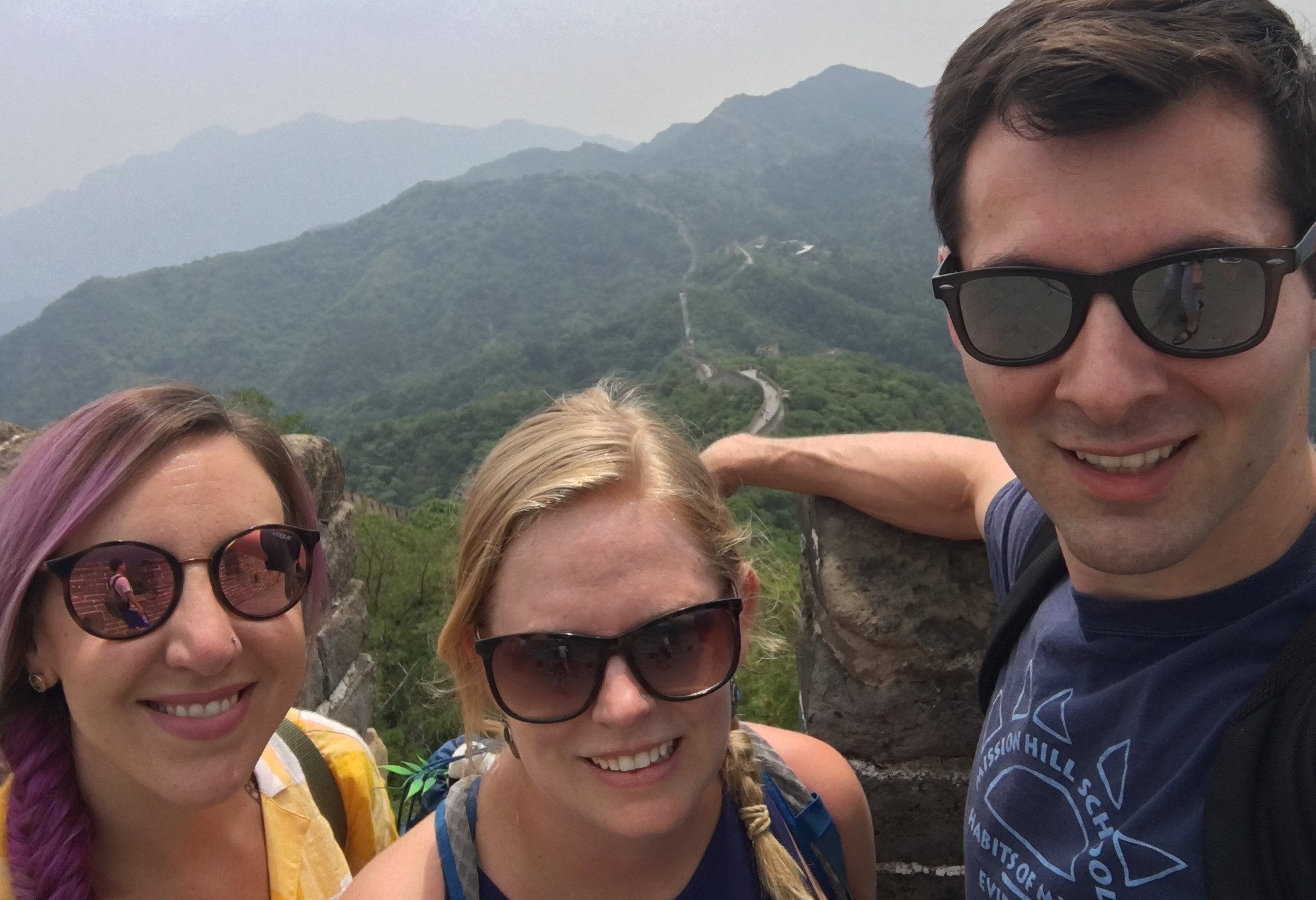Abraham Lincoln High School, located on the west side of San Francisco, is far from the traditional ethnic neighborhoods of Chinatown and the Mission District; centers of the city’s Asian and Latinx communities. Eighty percent of Lincoln’s students identify with these ethnic groups so AP Human Geography teacher Leon Sultan decided to utilize his own city to design a research project in these well-known locations in order to help his students dig deeper into their own communities and see them in a new light.
“Concepts of identity, culture, language, ethnicity, nation and the concept of the ‘nation-state’ are all central to our course – as well as to the lives of my students,” said Sultan. “I sent students on field trips into their own communities to research these concepts through new lenses.”
And by lenses, Leon means figurative and literal. Mirroring research he conducted on the Catalan independence movement in Barcelona last summer, Leon’s students took photographs, shot videos and recorded audio to document Sense of Place. They then worked in mixed ability groups to produce Vlogs (video blogs) using a clear narrative structure, voice-over narration, text graphics, and montages of still photo/videos and interview footage. The result were research projects that effectively demonstrate course concepts, utilize academic vocabulary and connect learning to their lives.
Project 1: “What is the impact of gentrification in the Mission” and “Is Chinatown Authentic?”
Project 2: “Chinatown district through the lens of Human Geography”
“Students benefit from seeing their teachers as role models and life-long learners,” said Sultan. “This summer, they watched me conduct field research through Vlogs I produced on my fellowship. When I arrived back to school this fall, students I had never met before were already well acquainted with me, and with key course concepts. Then, they engaged in the same type of learning that I did. Ultimately I want this project to serve as a template for other teachers to follow as our school moves towards more technology integration and interactive project-based learning.”
[minti_divider style=”3″ icon=”” margin=”20px 0px 20px 0px”]
In celebration of Lunar New Year, we are also proud to highlight the learning of a few additional
2019 FFT Fellows:
- Emily Kjesbo-Johnson (Saint Paul, MN) captured in virtual reality Thailand’s history, culture and architecture to create case studies for the analysis of geometric properties and theorems set amidst the rich backdrop of the Southeast Asian nation.
- Juliet Gayle (South Windsor, CT) explored the cultures and histories of Vietnam and Cambodia to ignite an interest in and respect of others, foster international mindedness and enhance cross-curricula units.
- Jennifer Funkhouser (Saint Paul, MN) researched the cultural and linguistic implications of French colonization in Northern Vietnam and explore Hmong heritage and culture to make a French curriculum more relevant and engaging.
- Sarah Samaros (Tyngsboro, MA) volunteered in a food pantry/soup kitchen in Ho Chi Minh City to inform culinary arts instruction that culminates in a Southeast Asian-themed menu in the student-run school restaurant.
- Dana Tatlock (Providence, RI) Explore Cambodian Buddhism and the country’s minority Muslim faith, examining the two religions’ daily practices, interactions with the country’s culture, histories, and the overarching question of religious tolerance to deepen learning of world religions in fourth- and sixth-grade classrooms.
- Bette Sloane (Garden City Park, NY) explored the mathematics behind the immense man-made structures of China and the delicate artistic compositions of Japan to create authentic, real-world Geometry problem sets that draw connections between engineering, architecture, and the arts.
- Matthew Grimes (Charlestown, MA) gathered in Vietnam, Laos and Cambodia artifacts about the human costs of the Vietnam War to engage students in thinking about when, if ever, it is acceptable for the US to use military force.
- Matthew Steiniger (New York City) joined restoration of Thailand’s reefs through the New Heaven Reef Conservation Program to accumulate research for student data analysis on the ecological/social effects of climate change and instill a culture of environmental activism.
- The team from Mission Hill K-8 (Jamaican Plain, MA)Research the history and culture of China through its most iconic landmarks to inform a three-month, school-wide study of Ancient China that addresses how past inventions and accomplishments impact our present lives.











 To clarify the broad scope of the holiday, Liz suggested using the picture book New Clothes for New Year’s Day
To clarify the broad scope of the holiday, Liz suggested using the picture book New Clothes for New Year’s Day